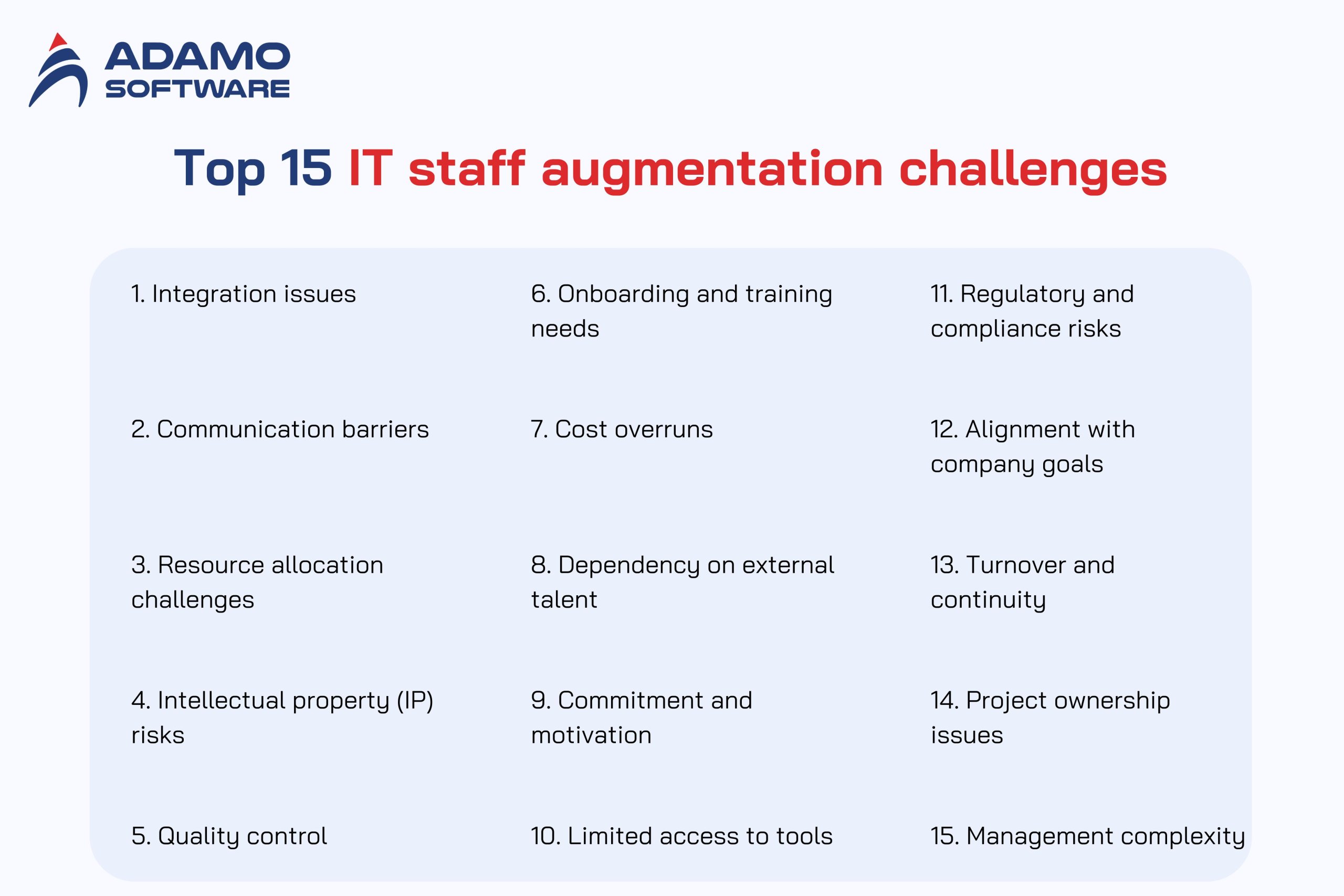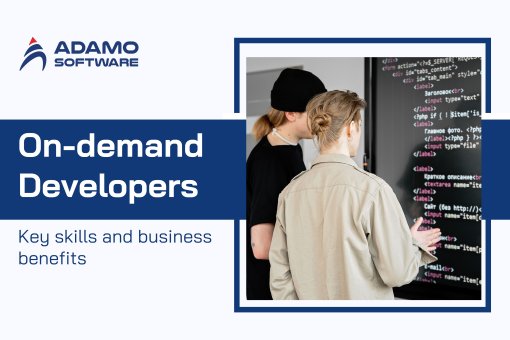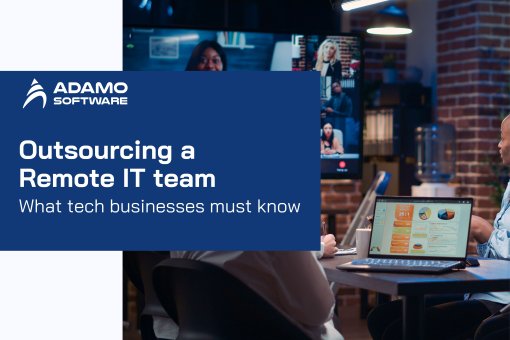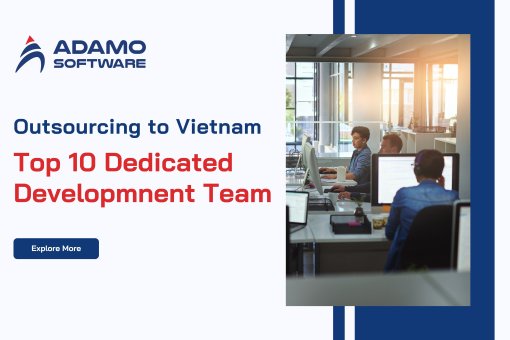IT staff augmentation challenges: 15 obstacles and how to solve them

IT staff augmentation has become a best practice for organizations. It is ideal for those needing to expand their team to fulfill specific tasks or meet urgent technology requirements. This approach is common in today’s fast-growing technological environment. IT staff augmentation involves outsourcing, where outside professionals are brought in. These professionals enhance the company’s existing manpower. This makes it easy for expanding companies to form efficient teams quickly. However, while IT staff augmentation is effective, it has advantages and disadvantages. Additionally, certain challenges must be overcome for successful implementation.
The IT staff augmentation challenges involve all possible problems when new augmented personnel join an appropriate team. Challenges that include integration problems, communication impairments, and management challenges may arise and possibly slow overall output and project success. Moreover, risks related to idea protection, quality assurance, and resource management pose a threat. They also need to improve the relationship between the in-house and the augmented staff.
Employee commitment or motivation is what organizations want to manage. Other factors are external staff retaining obligations and focusing on the organizational goals of the firm. Where these shortcomings are fully understood and efforts made to minimize them, businesses can see the full value of IT staff augmentation. Below, you will be introduced to 15 IT staff augmentation challenges. You will discover the elaboration of each problem and possible ways to address them. Further on, we will explain what exactly IT staff augmentation involves and exemplify best practices concerning Adamo Software.
By identifying and addressing IT staff augmentation challenges, organizations can design a positive IT staff augmentation environment conducive. Therefore, they can increase the performance and success of internal and external working teams.

I. Integration Issues
As organizations hire more IT personnel, new people joining any particular team can introduce different practices, methods, or communication styles. They also cause inconvenience when new substitutes are introduced to the clinical area. The reason is conflicting workstations or if the augmented staff is off-site or comes from a different cultural background. Sometimes the conversation can be hindered by participants’ language or the time difference, which affects overall coordination.
Regarding integration issues, in IT staff augmentation, there can be more issues concerning integration when communicating with teleworkers. They fall outside of engaging networks with the main team. Thus, it leads to delays and misunderstandings that hinder the project.
Solution
Among the solutions to the IT staff augmentation challenges is structured onboarding. Thus, proper onboarding will guarantee that new members become familiar with company tools, values, and communication channels quickly. The frequency of meetings and incidental face-to-face communication sessions can aid in the clarification of any cultural differences and avoid misinterpretations.
Further, project managers must identify people from the in-house team who will mentor augmented staff. This is a good strategy to foster a feeling of oneness. It means that external staff takes less time to become familiar with the rest of the team. One should use messengers as tools for communication and may be employed in IT staff augmentation to enhance its integration.
Solving integration problems in the context of IT staff augmentation is crucial for improving business processes with staff augmentation. To overcome these IT staff augmentation challenges, companies need to ensure successful onboarding, engage the augmented staff, talk with them about the culture regularly, and assign specific mentors.
II. Communication Barriers
Communication complexity usually deepens while outsourcing services go remote/offshore, thus having cultural/language differences. For instance, team members may decide what feedback given means from their perspective. They may also overlook cultural signals. In addition, due to the time difference, communication can take a long time.
Therefore, the executives may not get real-time results to aid in decision-making and thus slow project progress. Other common communication barriers likely to be experienced when hiring IT staff from an external agency are as follows: These barriers can lead to frustration and affect morale and cohesion within a particular team.
Solution
However, to avoid communication breakdowns about IT staff augmentation, organizations can employ several strategies. First, having clear means of communication, including Slack, Microsoft Teams, Zoom, et cetera. This creates a platform for interaction for everyone. Having protocols of how you want to communicate and at what point in the day makes managing time zones easier. It can be used when people working in the team have common language and terminology to prevent misunderstandings.
Also, it will create a culture of sharing feedback to ease communication when one may not understand something. Video calls instead of writing messages can lower the situations where the IT staff augmentation partners misunderstand the tone of the conversation. It also improves the rapport to alleviate these problems.
If communication barriers are well managed, integrated teams comprising internal and augmented workers are well coordinated. The management of these IT staff augmentation issues helps in accomplishing improved performance and concept directions.
III. Management complexity
Some challenges in management complexity come up most clearly when using IT staff augmentation. Especially in outsourcing arrangements where the workers are remote, from other geographical locations, or are from different cultures. As IT staff augmentation is cleared, it generates extra management layers. Managers are supervised to monitor different time zones, cultural norms, and team dynamics. This complexity has input to the distribution of tasks, decision-making time, and total project time.
For example, in managing project goals and their timing with augmented staff, more meetings and tools may be necessary. Yet they lead to slower work and an increased risk of missing deadlines. These IT staff augmentation challenges cause stretched resources. Especially when the project manager lacks adequate preparation for the more significant supervision of diverse and geographically dispersed teams.
Solution
To simplify the management IT staff augmentation challenge, incorporate more structure in projects through such methodologies as Agile or Scrum. Both of these methodologies rationalize work processes and define authority. Therefore, it simplifies the scenario for managers to supervise the original human teams and the augmented robotic teams.
Moreover, the team can use centralized PM tools like Asana, Jira, Trello, etc. They will be aware of the project status and work progress if they are located in different regions.
Daily meetings are also compulsory. These activities assist in diminishing rifts. They ensure that everyone on the team comprehends what is going on lest the project falls apart, as it did with the members of the Oneword team.
If companies adopt a single touch point’ or a point person for augmented teams, IT staff augmentation challenges could be managed effectively and with minimal stress.
Meeting these IT staff augmentation challenges helps guarantee managers address the new tasks without adversely impacting the team’s effectiveness and efficiency. Through gaining an understanding of structured frameworks, picking efficient tools, and maintaining clarity about communication procedures, a company can avoid the difficulty in management as well as support the teams in achieving the project goals.
IV. Intellectual property (IP) risks
Offshore and freelancers are common global hires that raise IP risks. Unfortunately, most external staff are not as loyal as internal employees. They may not comprehend the implications of disclosing or sharing company information. Businesses hiring IT outsourcing staff may find they are exposed if their team members are deployed remotely or in other countries with contrasting laws guarding IP. Managing IP risks in such cases is cumbersome and is one of the major reasons why IT staff augmentation is difficult. Because ever-augmented staff must be compelled to observe the company’s confidentiality and data protection norms.
Solution
Some proactive measures can be taken to manage IP risks in IT staff augmentation. One way is to administer sound NDAs. Also, ensure all the augmented staff involved in the processing and analyzing of the data undergo NDAs before they are allowed to work on the data. They create the legal standard for handling data confidentiality and include consequences for those agreements being violated.
More measures can serve as measures against losing ideas. They can limit the exposure of sensitive data and the application of authorized structures and programs. Divide staff access to the data depending on the position and responsibilities of the particular employee, providing him/her only with the necessary information.
Another critical solution is to provide training for the employees. It includes the company’s vendors and contractors about the significance of protecting company information. Most of these steps can be effectively accomplished by redesigning the IT staff augmentation strategy, reducing intellectual property risks, and avoiding data breaches.
V. Quality Control
Nearly all quality control problems associated with IT staff augmentation are rooted in dissimilarities in training and experience between corporate and non-corporate employees. External team members have limited insight into a company’s work patterns. Thus, the output quality may not be uniform.
One of the main areas of contention in IT staff augmentation is to ensure that everybody is standardized in the same way. It could also increase work in progress as other internal teams often have to correct inadequacies in work done by the augmented staff. This leads to added costs and time to a project’s overall duration.
Solution
Several strategies may help to improve quality control about IT staff augmentation. That’s why it is crucial to establish all requirements at the initial stage. This includes having well-documented standards, quality, and other specifications of the project, as well as the requirements on the deliverables.
Another is that the quality of augmented staff should be checked and reviewed frequently. So, managers can get to know of any problem and assist the augmented staff if they are deviant from expectations. The quality metrics are best tracked using project management tools such as Trello and Asana. Although not very much adopted, insist on the application of these tools when conducting cross-staff internal and external. The second suggestion is to supplement the staff with mentors who can help them and conduct monthly quality checks.
This is especially true if augmented team members are drawn from different parts of the economic system or additional levels of professional experience. Training sessions specifically developed around these standards can thus need extra support for quality consistency. These measures can effectively eliminate IT staff augmentation issues. They address quality control and ensure guarantees for effective performance. With these measures, external talent can fulfill their roles correctly and efficiently.
VI. Onboarding and Training Needs
In IT staff augmentation, recruitment, and training can be time-consuming and resource intensive. In situations where IT staff are needed for short-term assignments or projects, there is often tremendous pressure to integrate candidates rapidly. Onboarding of augmented staff tends to entail additional measures. They can be an orientation on company policies, a brief on a particular software, and training as to the quality parameters to be complied with. When these steps are skipped or when they are rushed through, then it means several things: misunderstanding, inconsistency, and heightened possibility of project delay.
Otherwise, one of the main issues in IT staff augmentation threats is the absence of defined onboarding processes. Internal teams and new employees become frustrated because they fail to articulate shared objectives and working norms.

Solution
There should be clear rules and a defined set of instructions for the onboarding process. This may involve the development of an organizational onboarding checklist where all the relevant information about the project and the tools relevant to the job are highlighted.
Encourage new augmented staff to choose their mentors or other team members. Sharing experiences with someone you know helps to adapt to the new environment faster and creates a strong bond within the team. Further, if training exercises address company standards and practice, learning time is reduced.
The performance of check-ins during the onboarding period can also assist in minimizing any misunderstanding or loss of concepts. These can be rectified on time. Addressing these onboarding and IT staff augmentation challenges allows external team members to integrate into the company to be productive and useful from the beginning.
VII. Cost Overruns
Additional costs are due to improper planning or other concealed expenses, inclusive of coordinating with outside employees. Companies might not fully appreciate the hidden costs that accompany the recruitment process. These can be the costs of assigning new staff to training, onboarding, and offering extra management attention to implementation.
Moreover, if external staff need equipment or permits, such costs also increase and put the project beyond financial capability. Issues of poor forecasts and lack of proper communication about budget problems further complicate these IT staff augmentation issues. This puts a lot of economic pressure on it, decreasing the cost-efficiency of staff augmentation.
Solution
The plan should comprise all potential expenses from the onboarding stage to resource management plans. Budget management can be proposed to keep a contingency budget to cover some unpredictable running costs. Financial activities can also be reviewed periodically. This helps project managers see how they are spending funds and where they can balance properly should they find out that costs are shooting up.
Consequently, another highly effective practice is communicating time expectations and project goals with augmented staff. Progress should be monitored through various planning tools that may reduce delays. Thus, it will increase the overall cost of the project. The first potential problems of IT staff augmentation, cost overruns, and other complications can be prevented. Most importantly, the establishment of realistic budget constraints, constant careful watch over expenses, and proper communication.
VIII. Dependency on External Talent
Outside workers in IT staff augmentation pose an SLA risk of eroding effective internal talent and system autonomy. When firms go on with the external consultants’ help, those internal staff might remain undertrained in many aspects. This generates a risk space within which critical knowledge and skills only reside with the augmented team members, with the project exposed should any of these team members be removed. IT Staff Augmentation issues can arise when external teams participate and introduce skills that are difficult to replace. It outlined that related reliance makes long-term projects frail.
Solution
To reduce dependency on external talent in IT staff augmentation, the firms can use the following strategies to ensure that they strike a balance. Another good practice is knowledge sharing, where external staff continue to orient other employees in the organization during the project. This way, internal teams build up competence and can undertake these tasks as and when necessary. It is recommended to effectively provide work correlates, document processes, and functional and technical procedures in a project. This helps retrieve original information in place of outside team participants.
Also, companies can invest more efforts in improving their internal human capital. This will minimize the dependency on outside consultants over time. The same can also be prevented by frequent checks of staffing requirements and planning to gradually bring in outside interns as a backup to in-house resources. That way, upskilling, the effective knowledge transfer of talent, and strategic planning become key focuses to counter the issues related to IT staff augmentation.
IX. Commitment and Motivation
External talent motivation levels too may be high or low depending on the approach of the companies that haul them into their employment. Augmented staff have perceived temporary employment. Therefore, they do not feel compelled to embrace organizational culture or project vision. This disconnection sometimes results in problems. They can fail to meet deadlines, cannot strive for something, and have little coordination with internal departments. These challenges may lead to the isolation of in-house teams from external teams. Because they are from different organizations. This is why commitment and motivation management are important. They help to achieve the common goal across all team members fixed term and open-ended employees, inclusive.
Solution
To improve the level of commitment and motivation of employees, companies can acclimate augmented staff into workplace culture as soon as they join. This can be accomplished by assigning them to group projects and making sure that they engage in team-related matters such as meetings and discussions. Sharing the project objectives and the impact of the work done creates a purpose for external human resources. Other measures, such as delivering and rewarding frequently, also play a role in enhancing the morale and motivation of the workers.
Nevertheless, opportunities for professional development may attract augmented staff and demonstrate that employee development is a concern. It may cover awareness training, coaching, and aging participation in decision-making. Reception is appropriate, and external staff makes them feel valued.
X. Regulatory and Compliance Risks
Legal and compliance risks can be hierarchy and originate from data privacy legislation, employment legislation, or rules of the particular industry or market. For instance, if a company works in sensitive spheres such as healthcare or finance, external staff must have an idea of the strictest compliance with certain rules. Failure to analyze and account for these risks leads to data leaks or violations of client rights to privacy. When the augmented staff works in another jurisdiction, the IT staff augmentation issues are even more difficult as there are more legal issues that can be easily avoided.
In addition, the scalability of compliance policies becomes an issue of organizational concern. This is because most organizations rely on third-party contractors or offshore resources. Both parties have to work with compliance standards, and any misunderstandings that occur can result in grave problems. Such a situation adds layers of challenge to project administration and supervision.
Solution
To reduce the attached risks, especially from the regulator in IT staff augmentation, companies should have a clear compliance measure. This framework should also cover training on the law and policies that are done periodically for internal and external staff. Externally sourced talent should be carefully vetted to ensure compliance. Additional risk reduction can be achieved by implementing a strict policy regarding data management and access.
Further, compliance check-ups and evaluations can also be done frequently to minimize the possibility of compliance problems in their infancy. Using compliance management software to keep track of and manage regulatory requirements should be encouraged by organizations. Therefore, a compliant approach to IT staff augmentation can help companies avoid these IT staff augmentation challenges.
XI. Alignment with Company Goals

When external staff are not motivated by the company goals and objectives, the entire project may be hampered. External team members may act in their self-interest or, at least, perform tasks that are irrelevant to the organization’s goals and purposes. These splits can cause inefficiency, delays, and poor output; in other words, misaligned resources do not perform well. The application of such tasks may cause demotivation among internal teams. This can be determined by the fact that unforeseen external participation does not correspond to the company’s vectors.
Misalignment causes problems in understanding what we are working towards. Since augmented staff do not know what the company wants to accomplish, they can underperform in their functions. This causes much frustration for both internal and external teams. In the long run, it will have low productivity and inefficiency in delivering the company’s business goals and strategies.
Solution
First of all, the thing of major importance is orientation – the company and its mission, its values, and the goals of particular projects. All stakeholders involved in each project must have a proper briefing on what the project entails and how everybody would fit into the big picture. Daily meetings would be recommended to allow all the members of a project to be on the same page, especially in case of emerging issues.
Also, there is a way in which encouraging collaboration at work can assist in increasing alignment. Periodic point-of-work communication and collaboration meetings involving internal teams and augmented staff could be facilitated. It re-profiles to foster new adopters’ understanding and make them feel part of the entire initiative. Motivation should be provided with expectations of accomplishment and feedback given to the participants.
Engaging outside team members in strategic discussions is also beneficial. It helps them become more aware of the company’s vision. When they join meetings with a focused intention, their understanding improves. This approach allows businesses to overcome IT staff augmentation challenges. It also ensures that all employees are aligned with organizational objectives.
XII. Limited Access to Tools
Restriction in tool utilization could stem from limited financial resources, the security policies put in place, or simply because of poor planning. As a result, external staff may not be privy to the same software licenses, equipment, or access rights as full-time staff. This can restrain their productivity and flexibility in their cooperation work. When augmented staff cannot apply the same resources as internal teams, then there must be inequalities in workflow, which delays the projects.
In addition, a lack of means to apply specific tools may hinder non-firm affiliates from meeting deadlines or performing as needed. This can lead to internal teams facing increased pressure to cover the lost time. Therefore, it will add to the stress and conflict. Such problems have negative impacts not only on the relevant teams but also on the achievement of the project in the long term, among which are,
Solution
First, as a method, an evaluation of the tools and equipment to be used for both internal and external staff will have to be done critically. Thus, companies should develop a list of necessary tools and ensure that augmented staff have those at their disposal from the project onset.
Further, organizations should develop a set communication policy that effectively provides details of their access protocols and security measures. Training users on how to use tools is also productive. It facilitates training and increases the efficiency and productivity of members of a team.
Companies should adhere to the tool’s usage check and evaluation of accessibility to discover any constraints that require extra action to be taken.
Finally, the lack of access to some tools must be compensated for by internal teams working with augmented staff by creating a good and supportive environment. This is the reason why focusing on tool availability and making sure everyone has everything needed can help companies avoid the IT staff augmentation challenges resulting from the tools scarcity.
XIII. Turnover and Continuity
The turnover in the augmented staff can be better-paid job offers; the staff may be dissatisfied with the working environment or personal issues. Often, when the external staff is leaving, several issues are likely to emerge, including destabilization of the teams. It can also hurt the employees as they struggle to work with new members who have replaced those fired while they need to deliver results. The turnover cycle could easily slow down a project and cost more money since recruitment and subsequent training take time and money.
Furthermore, the loss experienced from external sources can be a great threat when it comes to knowledge management. This may lower the efficiency of the business since new team members will take some time before they catch up with the rest of the team. It influences the project result and creates some issues in the internal and external relationships and collaboration of teams that are working on the project.
Solution
Several best practices can, however, be practiced overcoming turnover as well as improve continuity in IT staff augmentation. Firstly, it is necessary to set the organizational culture and appreciation of internal employees and external workers. It is advisable to offer growth, recognition, and stimulate staff activities because Swyply guarantees increased job satisfaction for external employees.
Furthermore, companies can concentrate on knowledge transfer by writing down processes and developing training materials for other team members. Even when some employees have resigned, important information will be within the reach of those who are remaining in the organization. It can be useful to schedule the manager’s updates and feedback to monitor the problem areas and to deal with them in their preliminary stages.
Furthermore, developing good working relationships means there is a ready resource—people who already know the workings of the company’s system. This means undergraduate lectures can be quickly replaced when turnover occurs depending on the performance of the candidate. Overcoming the above-highlighted IT staff augmentation challenges is, however, viable if organizations continue to prioritize continuity and actively prevent turnover.
XIV. Project Ownership Issues
Another problem associated with outsourcing IT staff augmentation can be problems with project ownership. If there is no clear owner of a project, it may lead to a situation when the team participants do not get fully engaged in the work. External staff may have a short-term view or attitude toward their work. They may not be fully committed to the project’s success. This can cause dissatisfaction between internal and external teams because internal staff will feel overloaded without any support. Such questions of ownership might create issues such as slowing the workflow and possible conflicts between team members.
Moreover, when augmented staff do not possess ownership, then the work performed may be of low quality. If there is no leader or a certain contact for a certain task, it takes time to reach a certain decision. Some problems remain unsolved. This can slow down advancements and be beneficial for all stakeholders and significantly prohibit the advancement of the project.
Solution
Thus, more attention should be paid to clarifying the roles and responsibilities at the project’s outset. The project plan should identify how each member of the project will engage and the specific role they play in the achievement of the project goals. Meetings for the organization of assignments and evaluations of the prior work could also be effective in keeping the personnel on their toes.
Further, this can effectively reduce or eliminate any leakages in ownership. Since a culture of collaboration is easily encouraged. Communication is important when internal and external staff are communicating. This allows for a true appreciation of each other’s responsibilities. Acknowledging inputs from the host team and other external teams can foster a sense of ownership across the groups involved. Hence it breeds cooperation.
Third and final is learning to equip the external staff with all that may enable them to complete their tasks. The reasons for project ownership issues can be addressed by outlining expectations and promoting teamwork in organizations. This allows successful management of IT staff augmentation.
XV. Resource Allocation Challenges
There are several reasons why resource allocation can be seen as a problem. There can be a misidentification of the requirements of a particular project. Thus, an organization may set inadequate, or even excess, resources for a project.
In turn, such a situation can lead to team members’ overload or insufficient workload. Furthermore, sometimes when external staff are working on our project, they are not provided with proper tools, or they are denied some valuable information. This slows them down and the project as a whole. If efficient planning is not made and implemented, the resources end up being misappropriated. This leads to either time wastage or more expenditure.
Also, there may be management of resources in a way that will create conflict within the team. External members may feel that while the internal staff is involved in their work, they may not contribute their best. This creates tension within the working group. These concerns often compromise the quality of the project and the achievement of set project objectives.
Solution
Organizations should practice coming up with a comprehensive resource map that defines all that is required to accomplish the project. This should be considered personnel, tools, and budgetary policies. They are needed to safeguard against a situation where a certain aspect is barely considered until after a certain stage has been developed.
Also, the extent of communication has to be healthy in that conversations have to be frequently held. It could be useful to keep all the team members aware of the resources available and the project requirements. Loose coupling is an advantage since it enables quick adjustments from the organization to meet project changes.
Applying tools also helps to track resource allocation more effectively when it comes to project management. Then, these tools will give an insight into how resources are being utilized and areas that require improvements. This way helps to minimize the issues associated with the IT staff augmentation concerning the resource management within the organizations and other stakeholders, who collaborate with companies.
Also read: Explore top 6 significant Benefits of IT staff augmentation
XVI. How IT Staff Augmentation Works at Adamo Software
Several IT staff are provided at Adamo Software based on the requirements of the clients in a given company. Since augmented staff are incorporated into the organizations’ teams. Adamo more or less solves many of the key disadvantages of IT staff augmentation, like integration problems and workstream compatibility.

The dedicated team is comprised of professionals who have various necessary skills. Thus, people most suitable are provided for each definite project. It is important to select them very carefully, which in turn reduces misunderstanding and increases efficiency.
Adamo ensures that communication between internal and external teams is open. Hence, this would reduce common IT staff augmentation issues such as language and culture barriers. It brings everyone up to speed and makes everyone work in harmony because updates are always done consistently.
Moreover, Adamo explains that task and time management for augmented staff is well-organized, and extensive onboarding and training are available to them. This focus on support helps to sustain very high standards of quality and makes teams eager to take on more assignments.
That is why Adamo Software manages to overcome the IT staff augmentation challenges that many companies experience and guarantees the project’s success.
FAQs
1. What are the main issues faced in IT staff augmentation?
The main issues include integration problems, communication difficulties, and managing differences. There are also concerns about intellectual property ownership and quality assurance. These challenges can slow down operations. They can also hinder cooperation between in-house and augmented staff. Overcoming these challenges is essential. It helps IT staff augmentation produce successful project outcomes.
2. What should companies do to uptick interfacing when implementing augmented staff?
Due to communication difficulties, the guidelines should be effective regarding communication and the use of collaboration instruments. Constant communication and team meetings will work well in making the organization open and increasing team harmony. This way, it helps to solve the issues that may arise.
3. What are the best practices for onboarding augmented staff?
Augmented employees should also follow a program with clear steps that can help them learn about the company and everything in it. Continuous training and support are also other requirements for developing effective practice. These practices assist in addressing onboarding and training issues, both of which are major IT staff augmentation hurdles.
4. How do organizations work towards the risk management of IP when they have augmented staff?
Some of the ways through which organizations can control risks within the IP framework include. Having clear contracts and well-drafted non-disclosure agreements. Furthermore, training augmented staff on company policies concerning the protection of intellectual property. Such risks are considerably reduced. Meeting these concerns is crucial in the fight against odds within the IT staff augmentation.
5. What solutions can be offered in cases of resource allocation difficulties?
According to research, companies that avoid problems with resource allocation should carry out project analyses and develop a resource forecast. Other kinds of resource information may also be obtainable by applying project management tools into practice. As a result, organizations can manage IT staff augmentation problems related to the efficient distribution of resources.











